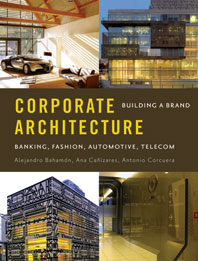What has happened to drawing? This recently posted rhetorical question on the Internet produced a torrent of responses, an ironic commentary from our digital age. Yes, we primarily draw electronically now. Yes, our several generations of active architects employ different media to think, to design, and to represent their ideas. Yes, our students and future architects still use hand drawing, but frequently as one tool in a kit that includes physical modeling and three-dimensional virtual manipulation. Yes, the architect’s world has changed. There should be no tears, only a glint at reality.

And yet, and yet … a new exhibition in New York tears us away from the brave new world and reminds us what drawing can do. Co-organized by the Solomon R. Guggenheim Foundation and the Frank Lloyd Wright Foundation for the 50th anniversary of Wright’s death and the opening, six months later, of the museum itself, the show, entitled (inelegantly) Frank Lloyd Wright: From Within Outward, displays more than 200 drawings, some never before exhibited, all from the architect’s studio, as well as models and digital animations of 64 projects.
“Quiet.” That word seemed to characterize most people’s response to the large sheets elegantly displayed within vitrines in a space that can gobble up all but the most histrionic displays. For the Wright aficionado, or the architect in love with drawings, the museum and the foundation have produced a summer swimming pool of a show: You have to dive in and take a deep breath.
The range of techniques and the craft present in the sheets of handwork remind us what we have lost in our transition to the electronic. The analogy lies in the piano’s transition to the electronic keyboard, where technical ability has thrived but dynamics has disappeared along the way. Rather than the subtle variations in tone, or the slight tremolo and the staccato attack, the nuance that lies in variation of technique, pianists found little but loud and soft in the new technology, resulting in the tonal equivalent of hitting the same key, forcefully, over and over—banging, rather than playing. Regrettably, our own drawings, too, often hit the same key.
The Wrightian drawings (Wrightian because few can claim his sole authorship), however, fly across a range of techniques, attracting us with traditions that extend back to the caves at Lescaux. Some exhibit pure idea or form conveyed by line; others appeal to the senses through texture or tactile effects or color. Nature frames images, creating layered perspective, while the human form and furnishings lend scale. The media vary from ink lines and washes to gouache and watercolor. Within the range, it is arguable that nothing conveys the immediate link between human cognition, the kinesthetic sense, and intention more effectively than the handheld graphite pencil.
At Wright’s own Oak Park Studio (1897), for example, the image of house and workshop set in the parklike setting fairly pulses. The media are simple: graphite pencil and sepia ink on paper. Employing those tools, however, the lines display contained energy—inexact, discontinuous, but almost electrically charged. A minimum of rendering defines the shades and shadows. The human-made elements, particularly the fenestration, seem capable of machinelike motion, while nature envelops the studio and weds the constructed environment with the natural. All with a few, intentional lines.
Ink offers the delineator opportunities for heightened drama. The Larkin Building (1902–06), drawn with sepia ink on paper, throws the blocks of the urban office into relief. Unity Temple (1905–08), ink and watercolor on paper, fairly jumps from the sheet, strongly set apart from its background. And most famously, in the Robie House in Chicago (1908–10), the sepia ink on art paper has been reduced to a pattern of blacks and neutrals in which all seems to be thrusting planes, all shadow and light.
In black-and-white and colored drawings, we are aware of the maker. Can that be a distinguishable characteristic—the inevitability, even the presence, of the person behind the image? The individual lines of colored pencil bubble and bump their way into a chromatic whole, causing lines of contour to flow, like the drawing for the Taliesin farmlands (1925–59) executed with colored pencil and ink on tracing cloth. Washes and watercolors of the Willets House (1902–03), for example, add an ocher-laced fluidity that ties the structure to time and place, an ensemble related to Wright’s love of Japanese printmaking and the influence of late Art Nouveau. White, the presence of all color, applied as gouache to the Thomas Gale House (1909), pops the static structure out from the picture plane with calculated boldness.
Plans (Wright’s patterned two-dimensional representation of flowing interior space related to the larger world), and details (sometimes a quick working-out, sketched, or refined), underscore how the prolific master thought and represented his thought. For contemporary audiences, elegiac about the sea change currently taking place, the medium at the Guggenheim becomes the message. Architects today are embarked on mental wonders, thanks to our computer-generated imagery, our parametric modeling, and our seemingly endless abilities to conceive and construct. Confronting Frank Lloyd Wright, sheet after sheet, we have to ask: What has happened to drawing?
If you wish to write to our editor-in-chief you can email him rivy@mcgraw-hill.com.




Post a comment to this article
Report Abusive Comment